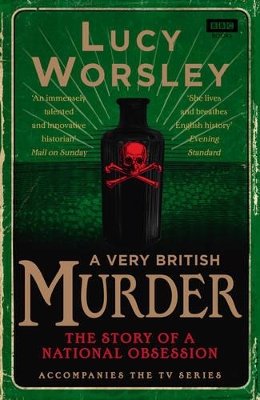Reviewed by Rinn on
Despite not having seen the accompanying television series, I pretty much proved Lucy Worsley’s point when I was drawn to this book because of the title. A tale of how the British public have been obsessed with the idea of murder, particularly in the past three hundred years or so, it’s actually quite a lot more than that. Covering the development of the police force, the popularity of horror and true crime novels, famous authors inspired by true crime and other anecdotes like the origins of Madame Tussaud’s, Lucy Worsley manages to pack a lot into one volume.
The first chapter, the story of the Ratcliff Highway Murders, just didn’t do much to grab my attention despite its rather morbid happenings, and I have to admit that I only glanced over much of it – and I actually skipped over many more, but there were some stand-out sections. For example, the chapter on the first appearance of the ‘Penny Dreadful’ was fascinating – these were cheaper alternatives to true crime novels and therefore also accessible to the lower classes. It also explains the name of the recent TV series, which features familiar characters from horror and crime together in one place. There are also sections on authors like Charles Dickens and Agatha Christie – which serves to remind me that I haven’t read anything by either of them!
Although I may have skipped some chapters, this is definitely the sort of history book you can read the entirety of due to Worsley’s writing style, which panders to all. She does not assume the reader is familiar with the history, which makes it perfect for anyone with a new interest in the subject, yet she also does not patronise. However, some areas just unfortunately failed to capture my interest at all. Recommended if you’re interested in the history of criminology and inspiration behind true crime, or fancy reading something a bit more macabre!
Reading updates
- Started reading
- 26 October, 2014: Finished reading
- 26 October, 2014: Reviewed
